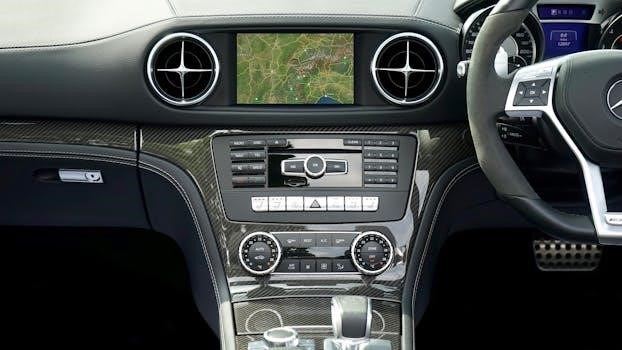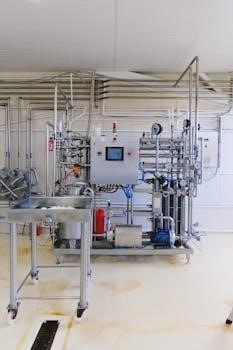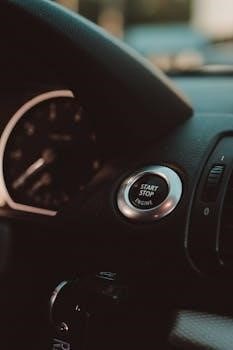Arma 2 Controls⁚ A Comprehensive Guide
Understanding the intricacies of Arma 2’s control scheme is crucial for effective gameplay. This guide provides a detailed overview, covering basic movement, combat actions, vehicle operation, squad commands, communication, and customization options. Mastering these controls will significantly enhance your in-game experience.
Basic Movement Controls
Navigating the vast and complex environments of Arma 2 requires a solid grasp of the basic movement controls. The primary movement keys are typically the standard WASD configuration, allowing for forward, backward, and strafing movements. Additionally, the ‘W’ key can be double-tapped for sprinting, crucial for quickly traversing open areas or closing the distance on an enemy. The ‘Ctrl’ key is used for crouching, while ‘Z’ or ‘C’ will allow you to go prone, offering reduced visibility and a more stable firing platform. ‘Spacebar’ is used for jumping, helpful for vaulting over obstacles and navigating through rough terrain. The ‘Q’ and ‘E’ keys enable you to lean left and right respectively, useful for peeking around corners or breaking line of sight. Finally, the mouse is used for looking around, essential for situational awareness. These controls are fundamental to your survival and tactical positioning within the game’s realistic combat scenarios. Proper use of these controls ensures smooth and effective movement around the map and allows for better tactical positioning. Understanding and mastering these basic movement controls is the first step toward success in Arma 2.
Combat and Weapon Controls
Engaging in combat within Arma 2 demands precision and familiarity with its weapon control system. The left mouse button is primarily used for firing your weapon, while the right mouse button is used for aiming down sights (ADS) or using a scope. The ‘R’ key is the standard command for reloading your weapon, a crucial action that needs to be executed swiftly and efficiently. The ‘V’ key allows you to switch between different firing modes, such as single shot, burst, or automatic, adapting your weapon to the current combat situation. The mouse wheel can be used to cycle through your available weapons. The ‘G’ key is used for throwing grenades or other throwable items. The ‘B’ key will change your stance from standing to crouching and prone, allowing you to adapt to the combat environment. Furthermore, the ‘X’ key toggles the use of the laser designator. Utilizing the correct firing mode and ammunition type is key to achieving accuracy and avoiding wasting ammunition. Mastering these controls is key to your effectiveness in combat, as these controls allow you to engage and eliminate enemies quickly and effectively. Proper use of the weapon controls is necessary to stay alive and win in the game.

Action and Gear Menus
Arma 2’s action and gear menus are essential for interacting with the game world and managing your equipment. The default key for accessing the action menu is the middle mouse button; this menu allows you to perform various actions, like interacting with objects, healing wounds, and getting into vehicles. It provides a context-sensitive list of options depending on the situation you are in. The ‘I’ key is used to open the inventory or gear menu, where you can view all the items you are carrying. From this menu, you can equip weapons, use medical items, and manage your equipment loadout. It is also the place to drag and drop items to trade or equip your inventory. Managing your gear effectively is crucial for survival, especially considering the weight of your equipment affects your movement. Proper utilization of the action menu allows you to engage in various tasks and activities, such as moving obstacles and repairing damaged equipment. The interaction and gear menus are very important for completing in-game tasks and missions, and understanding the controls for them is crucial to your success in the game.

Vehicle Controls
Operating vehicles in Arma 2 requires a different set of controls compared to infantry movement. The standard ‘W, A, S, D’ keys are used for acceleration, steering left, braking/reversing, and steering right, respectively. However, it is important to note that the handling of vehicles can vary greatly depending on the type, with tanks being slower and less maneuverable compared to cars. The ‘Spacebar’ is commonly used for the handbrake function. For helicopters and other aircraft, the controls can be more complex, often involving keys for adjusting pitch, roll, and yaw. A throttle control is necessary to control the aircraft speed and altitude. Vehicles may also have additional functions, such as turrets or cargo hatches, which are activated with specific keys. It is essential to familiarize yourself with the controls for each type of vehicle you intend to use. Furthermore, understanding the vehicle’s behavior, like how it responds to different terrains, is crucial for safe and effective operation. Proper use of vehicle controls can be the key to successful missions. It is recommended to practice in a safe environment before engaging in combat.

Commanding Squads
Effectively commanding your squad in Arma 2 is crucial for achieving mission objectives. The game utilizes a combination of keyboard shortcuts and a radial menu to issue orders. You can select individual squad members or the entire team using the function keys (F1-F10 by default) or by clicking on their names in the squad interface. Once selected, you can use the number keys (1-0) to access various command menus, each containing a variety of options for movement, engagement, and special actions. For instance, pressing ‘1’ then ‘1’ again might instruct your squad to form up, while ‘2’ could order them to move to a specific location. The tilde key (~) or backtick key (`) often opens a more detailed command menu. Additionally, you can use the ‘Shift’ and ‘Ctrl’ keys in combination with the function keys to manage different color teams. Remember to utilize the communication tools to convey your intentions and receive updates from your squad. Good communication and efficient squad management are key to success in Arma 2. It’s also vital to learn the specific command hierarchy to properly control your team.
Communication and VOIP
Effective communication is paramount in Arma 2, especially in multiplayer scenarios where coordinating with teammates is essential for success. The game offers both text-based chat and Voice over Internet Protocol (VOIP) functionality to facilitate communication. VOIP is typically the preferred method due to its real-time nature, allowing for quicker and more direct exchanges of information. To activate VOIP, you’ll generally need to use a designated push-to-talk key, which can be customized in the control settings. It is important to configure your microphone correctly for clear communication. Text chat, accessible via the ‘Enter’ key, is suitable for sharing less urgent information. You can cycle through different chat channels (e.g., side chat, global chat, team chat) using a specific key. Utilizing both VOIP and text chat strategically will allow you to effectively coordinate with your team, share critical intelligence, and improve overall teamwork. Remember to be mindful of your microphone settings to avoid transmitting unwanted background noise that could interfere with clear communication. Clear and concise communication is key to tactical success in Arma 2.
Customizing Controls
Arma 2 offers extensive control customization options, allowing players to tailor the game’s controls to their individual preferences. This feature is crucial due to the game’s complexity and the multitude of actions available. To customize controls, you can access the options menu from the main menu. Within the controls section, you will find a comprehensive list of actions and their corresponding key bindings. You can reassign keys to suit your style, including movement, combat, and action menu commands. It is recommended that you take the time to review each default setting. Consider what keys are most comfortable for you to access during intense gameplay. Some players prefer using a more compact control configuration for ease of access, while others might find a more spread-out configuration more natural. It is advisable to experiment with different setups to find the best match. You can also create different control profiles for specific scenarios. Customization is essential for optimizing gameplay and minimizing errors during crucial moments. Remember to save your control settings after making any changes.
Common Keybindings
Familiarizing yourself with common keybindings in Arma 2 is essential for efficient gameplay. The ‘W’, ‘A’, ‘S’, and ‘D’ keys are typically used for forward, left, backward, and right movement, respectively. Double-tapping ‘W’ usually initiates a sprint. The spacebar is often used for jumping or vaulting over obstacles. The ‘Ctrl’ key is commonly used for crouching, while ‘Shift’ is frequently used for actions like sprinting or holding your breath while aiming. The mouse is used for aiming and looking around, with the left mouse button generally used for firing and the right for aiming down sights. The middle mouse button or ‘E’ key is commonly used to access the action menu. Number keys, 1 through 0, are used for selecting weapons and issuing squad commands. The ‘G’ key is used to show or hide the grid on the map. ‘H’ is often assigned to help functions. Remember that these are default settings and can be modified in the controls menu. Understanding these common bindings will significantly improve your response time in the game.

Advanced Control Considerations
Beyond the basic keybindings, Arma 2 offers advanced control options that can significantly enhance your gameplay. Adjusting mouse sensitivity, both X and Y axis, is crucial for aiming accurately; some players prefer lower sensitivity for precision shots. The smoothing setting in controls affects how your view moves when you make mouse inputs, and setting it to zero is often recommended by many players for direct and precise control. Head bobbing can also be adjusted, with many disabling it for a less distracting experience. Understanding how the fatigue system works and affects your stamina is also a key advanced control consideration, as you might need to manage it for better mobility. Additionally, some advanced players rebind default controls for better accessibility. The action menu can be accessed via the middle mouse button, but many players rebind it to a key they feel more comfortable with. Finally, exploring the use of the numpad for various commands and understanding the team color selection via Shift-F1 to Shift-F5 can help in tactical gameplay. Mastering these advanced controls can provide a significant edge in the game.
